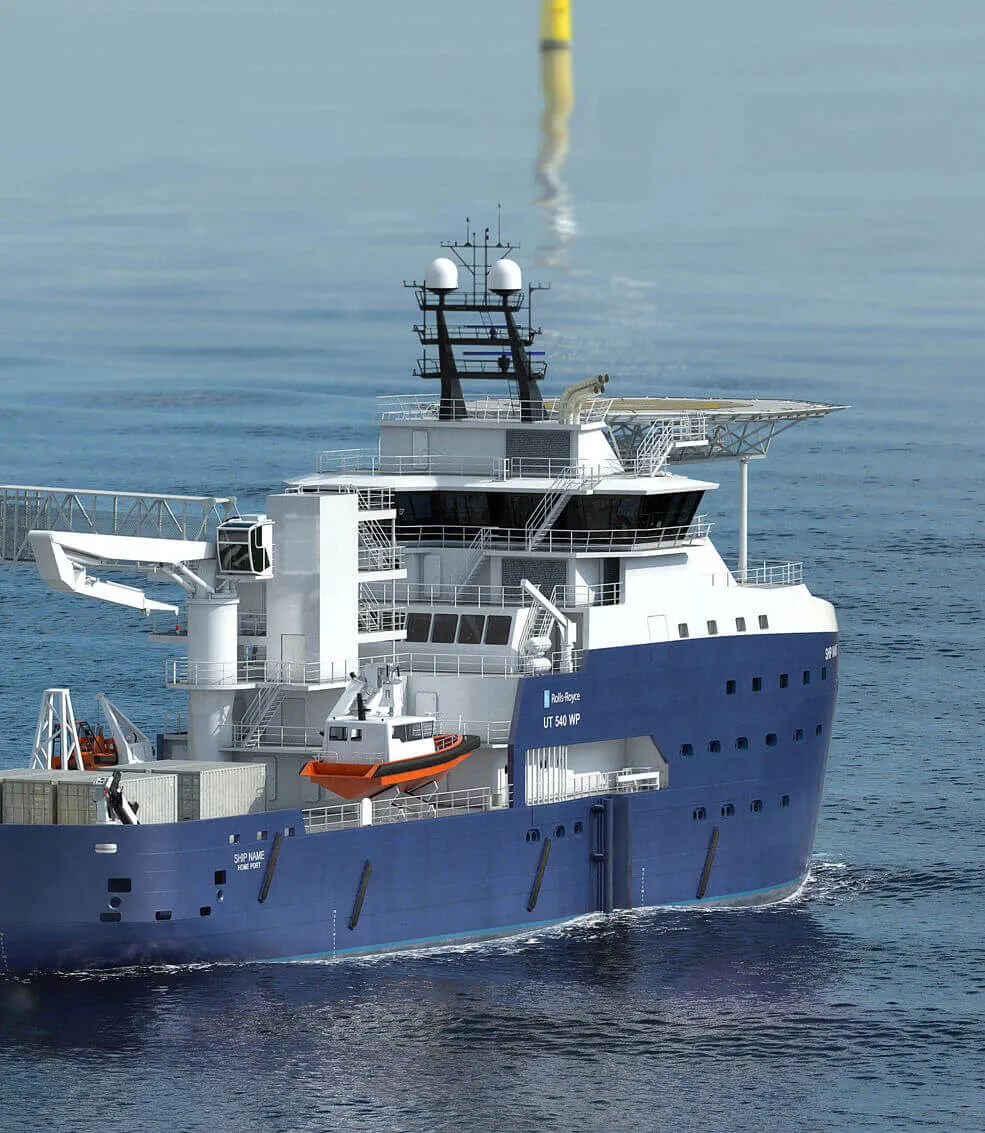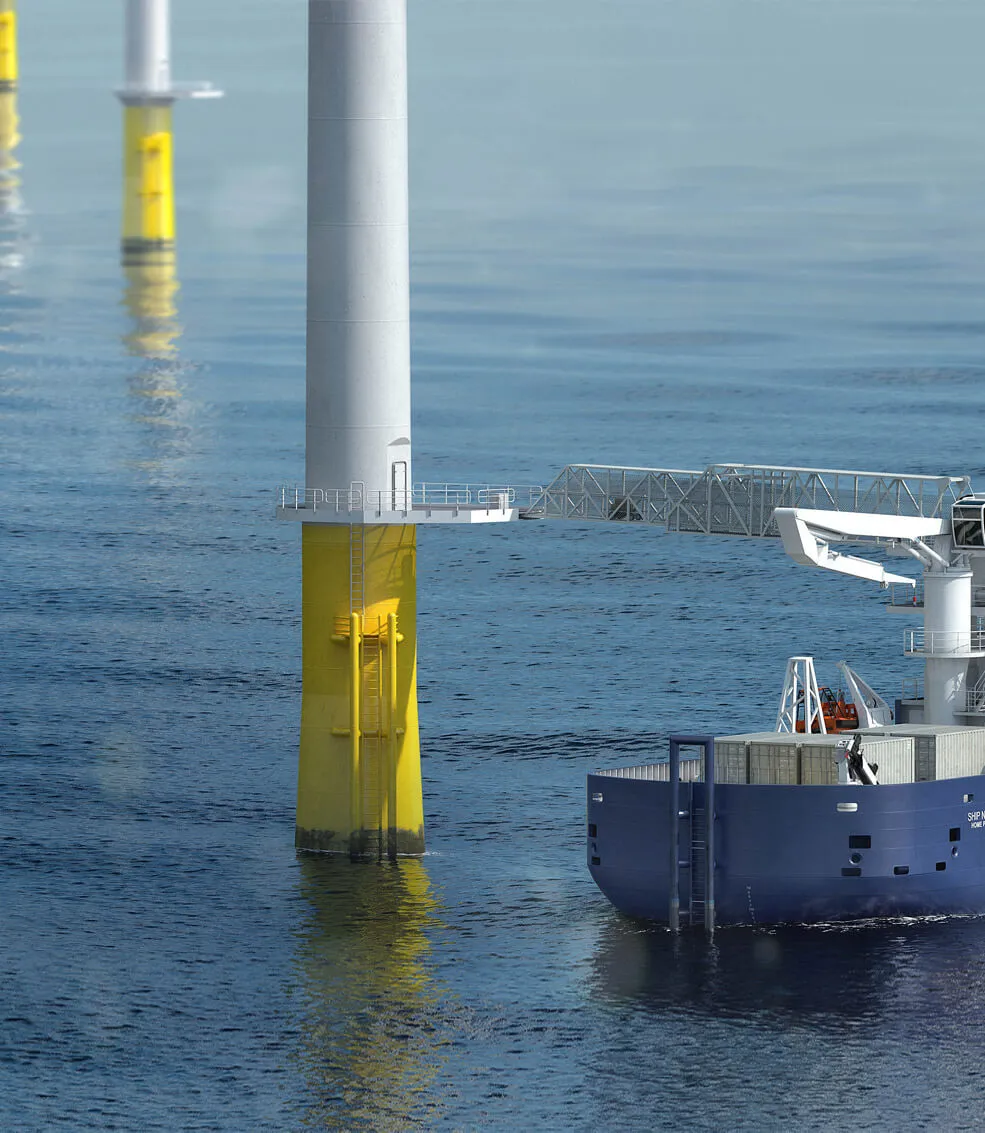NEXUS takes action
In the NEXUS consortium, key players in the offshore wind energy market are jointly developing concepts for future crew transfer and service operation vessels that will cut maintenance costs and emissions to air.
Offshore wind farms are playing an increasingly important role as the world turns to renewable energy to curb climate change. It is estimated that the European offshore wind market will reach an annual capacity of approximately eight gigawatts (GW) by 2021 and 14 GW by 2030. This trend is not limited to Europe; Asia and the USA are on a similar journey.
The current development is characterized by increasing wind turbine sizes and capacities as new wind parks are planned and developed in harsh areas at greater distances from shorelines. This comes with a growing need for efficient ships for maintenance and repair.

Lowering costs and emissions
Current estimates put the operation and maintenance (O&M) costs of a typical wind farm at 20 to 30 per cent of its life cycle costs. Technicians, equipment and spare parts are mostly transported by service vessels, which account for an estimated 73 per cent share in the total O&M expenditures. Typically smaller in size, crew transfer vessels (CTVs) provide this service for wind farms located close to shore and in protected areas. Larger service operation vessels (SOVs) are required when wind farms are located farther from shore and in a tougher environment.
DNV GL has played an active role in developing class rules for both vessel types and related service activities, such as walk-to-work. It was therefore an obvious decision to join the NEXUS consortium, which counts the major players in this market as well as recognized research institutes among its members.
The main objectives of the NEXUS project are to achieve a 20 per cent cost reduction in the maintenance of wind farms and reduce associated greenhouse gas emissions by 30 per cent.
Asbjørn Skaro, Director Systems & Deck Machinery – Commercial Marine at Rolls-Royce, says: “The number of European SOV’s are estimated to quadruple within the next ten years. Through the NEXUS project, we aim to provide a vessel concept with improved and new solutions for operations and maintenance of offshore wind turbines and farms. The overall goal is to make offshore wind power more cost-effective.”

Developing design concepts
Detailed expertise regarding the operation of wind farms and the plans for new ones is the essential basis for the project. Environmental conditions, the number of turbines and the distance to shore are some of the key parameters designers and operators must know to develop optimized concepts.
The NEXUS project will address all aspects that may influence the industry’s ability to meet the objectives. Business models will be developed that can represent the multiple actors, as in the case of operation and maintenance, and enable robust decisions. These business models will play an important role during the assessment of the design concepts.
The basic capabilities of a vessel concept result from its design, size, capacity and hydrodynamic performance. Other key elements in OSV design and performance that will be investigated include the potential use of alternative fuels that could deliver cost savings while reducing greenhouse gas emissions, hybridization, and cold ironing, both in port and at the wind farm. The on-board power management system is another component harbouring significant energy-saving potential. Various degrees of automation may also contribute to cost reductions. The potential risks are addressed in a separate work package.

Rules and regulations
Needless to say, the design concepts need to make sure that operation and maintenance activities are safe for the persons involved while protecting assets and the environment. However, when developing innovative concepts, situations may rise where existing regulations are challenged, or no rules or regulations exist that would adequately address the given risks. Such cases will be assessed based on the IMO Guidelines.
From the early concept evaluation, the intention is to develop one or two suitable vessel designs that will then be subjected to detailed simulation, testing and demonstration. The expectation is that these designs will document the achievable cost savings and objectives related to greenhouse gas emissions. The decisionmaking process developed and followed in this project to arrive at the new designs will be documented for future use.
